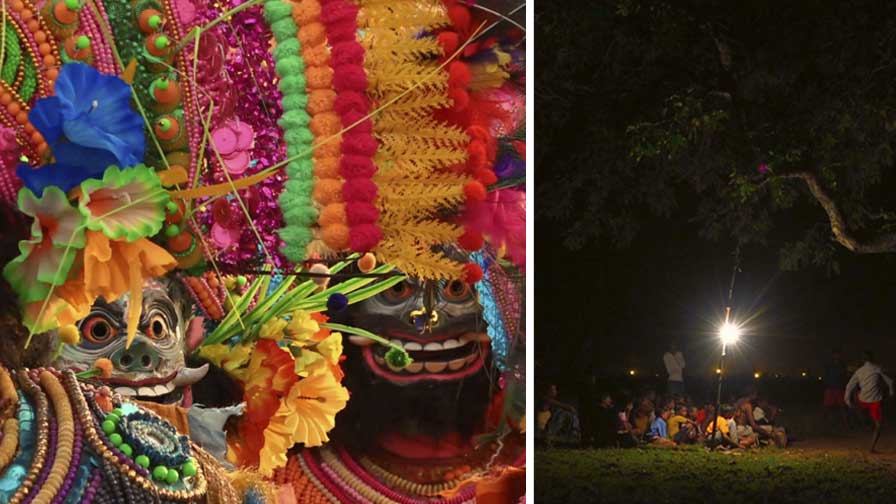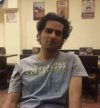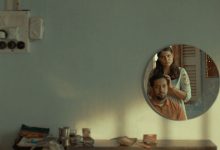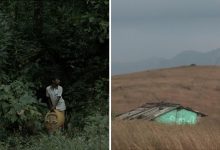Cinema has the ability to transform subject into object and object into energy, so that desire can be withdrawn. Desire and resultant pleasure must wait through delay, or so states the cinema. Prantik Basu’s Bela uses this relationship to desire through the location-space i.e., the village of Bela, which literally means “time.”
Basu’s approach is to transform time into speed and slowness through changing the shutter speed of his camera; whilst simultaneously fragmenting space into light and dark. In this way parts of the frame are static and moving, or light and dark. The multiple exposures create a divination of time, which is simultaneously moving when still, and still when moving. This is possible largely through the pre-empted and delayed editing that create tension through the whole.
The use of diagetic sound and revealing the source of light in the frame suggest grace; that dissolves the relationship between sacral and profane. The use of camera movement against the face and towards the feet create a sensorial experience that challenges faciality; whilst at the same time representing the bare feet as a symbol of freedom from society. The constructed nature of time in the Chhau dance performance forms a binary with the infinite, atemporal form of nature. This atemporal nature suggests the equipment-like relationship between subject and object. In a remarkable sequence a worker balances cut wood in the form of sticks to suggest the relationship between balancing and unbalancing. This equipment has a sense of rhythm making the everyday mechanic much like the body becomes-machine through this rhythm.
Bela is not about gender as gender works at the level of the conscious, but instead of the subconscious female (anima) and male (animus) aspects of the characters. The telegraph pole is the apparatus to connect the unconscious, relating to the filmic unconscious: the film that plays beneath the surface. The equipment that surrounds the characters is surrounded by animals that do not possess the agency of the human characters i.e., their being is poor-in-the-world; whereas the characters are world forming.
As in the films of Luis Buñuel, the partial object represents desire that must be withdrawn so that matter can return to intensity. The dead chickens represent the arrival of sacrifice into the logic of the everyday nature of the space; with the interior spaces pointing to the outside i.e., nature. In other words, constructed time is an index to eternity. Much like Chhau dance which constructs and deconstructs in circles, the train is the repetition of the first note (sama) that creates a repetition in the linear flow of the narrative. In this way, the architectural interior is ruptured by the exteriority of nature so that the spectator feels time as a time.
The anima represented by the deity, is upside down representing the pathological nature of the unconscious. The objects at rest have a different degree of speed and slowness unlike the subjects in the back of the truck that transform a static cinema into one of a body in motion. The wind produced by this motion refers to the materiality of desire which must be collapsed to become one with denotational intensity. In this way, the clothes worn by the Chhau dancers are props i.e., free cinematographic objects. The closing sequences with the circular designs on the floor represent the curve as authentic Indian experience, instead of straight lines that converge and climax at a point.
The Chhau dance itself constructs through the curve, i.e., construction and deconstruction, so that the moving bodies, in their perfomativity are freed from the society they occupy.
Bela on IMDb






Leave a Reply
You must be logged in to post a comment.